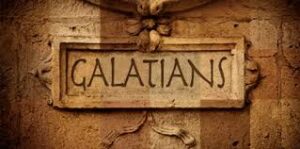Af – The Torah of Righteousness
The Torah of Righteousness
In general, I will not be using the word “law” in this commentary. That is a word for people who don’t love and honor the Torah (Psalm 1:1-6). The law is a negative phrase. That is why I don’t use the phrase “the Old Testament” in my commentaries, but use TaNaKh instead. Something old seems like it isn’t worth anything anymore and needs to be thrown out and replaced by something “new.”
However, I will use the word “law” in a very limited basis (as does the TLV) in two files: (Bd) Through the Law I Died to the Law, and (Bi) All Who Rely on the Deeds of the Law are Under a Curse, as a reference to something negative: legalism, or the attempt to gain salvation through obedience to the 613 commandments of Moshe, for which the Torah was never intended. In this sense the word “law” is a perversion of the Torah. Sometimes I will refer to the word “law” when referring to the Oral Law (see the commentary on The Life of Christ, to see link click Ei – The Oral Law).
The Torah is perfect and eternal. It is a lamp to our feet and a light to our path (Psalm 119:105). In every Messianic Synagogue all over the world, believing Jews and Gentiles (Ephesians 3:14) participate in the “Torah procession.” The Torah scroll is brought out of the ark and taken up and down the aisles to honor God’s Word. Psalm 2:12 instructs us to: Kiss the Son . . . and happy is everyone taking refuge in Him! So, people kiss their Bible or Sedur, reach out, and touch the Torah scroll as it goes by, so as to kiss the Son, the Word of God who became flesh and tabernacled among us (John 1:1 and 14).
The reason it will last forever is because God’s Word will last forever. Yeshua said: Do not think I have come to abolish the Torah or the Prophets. I have come not to abolish, but to complete (see the commentary on The Life of Christ Dg – The Completion of the Torah). There are 613 commandments in the Five Books of Moshe; 365 negative commandments and 248 positive commandments. These 613 commandments are viewed by Judaism as a unit – if you break one, you break them all. So, besides teaching much needed doctrine stories that offer great examples of Godly living, it is an impossible standard to live by. And because it is an impossible standard to live by, ADONAI gave the Jews a Levitical sacrificial system. The Jews were continually sinning, so they were continually offering sacrifices to temporarily cover their sins. This was done throughout their lifetime. It was a long, bloody, never-ending trail of sin.
Now, salvation has always been by faith, even during the Dispensation of Torah. When an Israelite felt the pain of sin, he or she would bring a sacrifice to the Tabernacle or Temple as a substitute for their sin. But merely placing a sacrifice on the bronze altar didn’t mean the sacrifice was accepted by Ha’Shem. Only those who were humble and contrite of heart for their sin would be forgiven. Just like today, however, there were those who just went through the motions. And God rejected their sacrifice (see the commentary on Jeremiah Cc – False Religion is Worthless).
The Bible teaches that the Torah became our guardian to lead us to Messiah, so that we might be made right based upon faith (Galatians 3:24). The Torah was supposed to teach the Israelites that the 613 commandments were, in fact, an impossible standard to live by and they could not do it! If they learned that lesson, when Yeshua Messiah came, then they would have eagerly accepted his offer of salvation, free from works of righteousness. But that didn’t happen because of the Oral Law. Over the four-hundred-year Intertestamental Period the Jews came to believe that the Oral Law was equal to, if not a little bit superior to, the Torah. As a result, they took God’s high holy impossible standard, and pulled it down into the mud of works righteousness. Things they could actually do. So, when Messiah came offering His salvation of grace through faith it was rejected. But many believers today confuse the Pharisaic Judaism that they see being practiced in the B’rit Chadashah with the righteous Torah. All, I repeat, all of the conflicts that Yeshua had with the Pharisees and Sadducees in the B’rit Chadashah were over the Oral Law, not the Torah. This is why many Christians refer to “the Law” as a negative thing to be avoided, equating it to legalism, not the righteous Torah.
Galatians has been historically interpreted by Christianity as delivering believers a stark choice between God’s “Law” and God’s grace. Those who choose any obedience to “the Law,” according to this faulty view of Paul, are unfaithful to the Messiah and the saving power of the gospel. But nothing could be further from the truth. Paul was referring to the corrupt man-made Oral Law, not to the Torah of righteousness.
So after that which is perfect, Yeshua Messiah, has come (First Corinthians 13:10), and the Dispensation of Grace (see the commentary on Hebrews Bp – The Dispensation of Grace) has been ushered in, what use is the Torah to us today? I am glad you asked! Today, Torah is important, not for salvation, but as a blueprint for living (see the commentary on Exodus Dh – Moses and the Torah). Therefore, the Torah gives us wisdom, insight into godly living, practical advice of our personal, family and professional lives.




